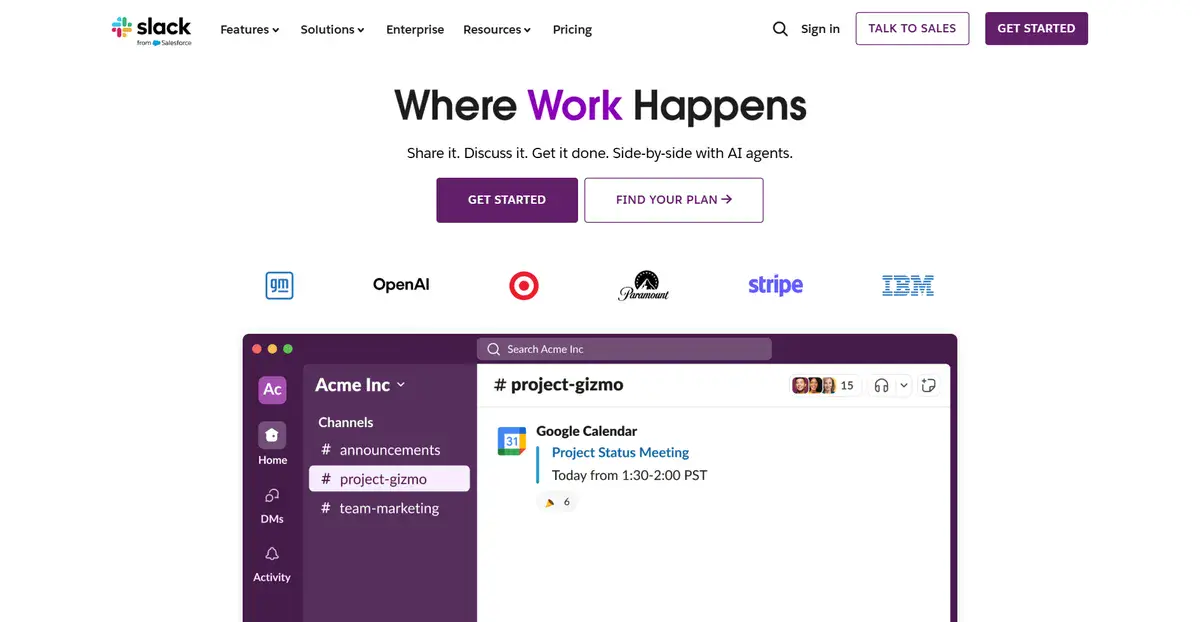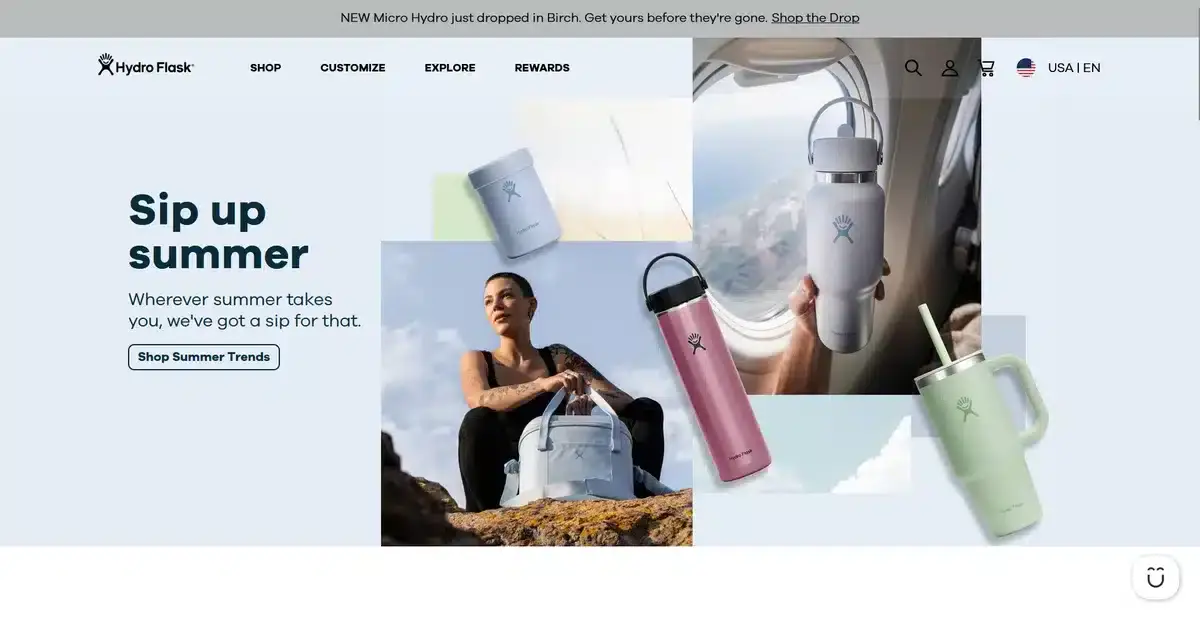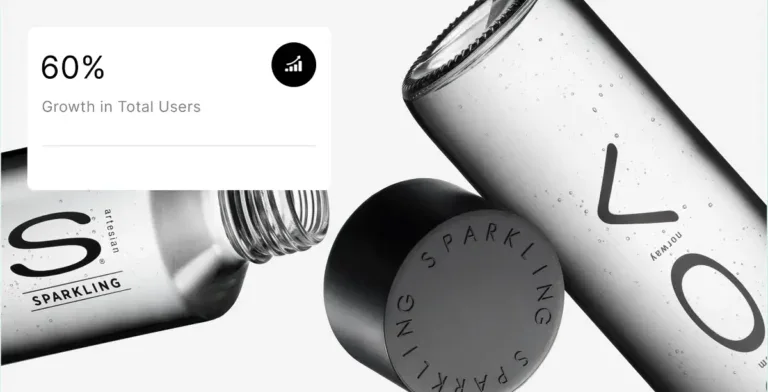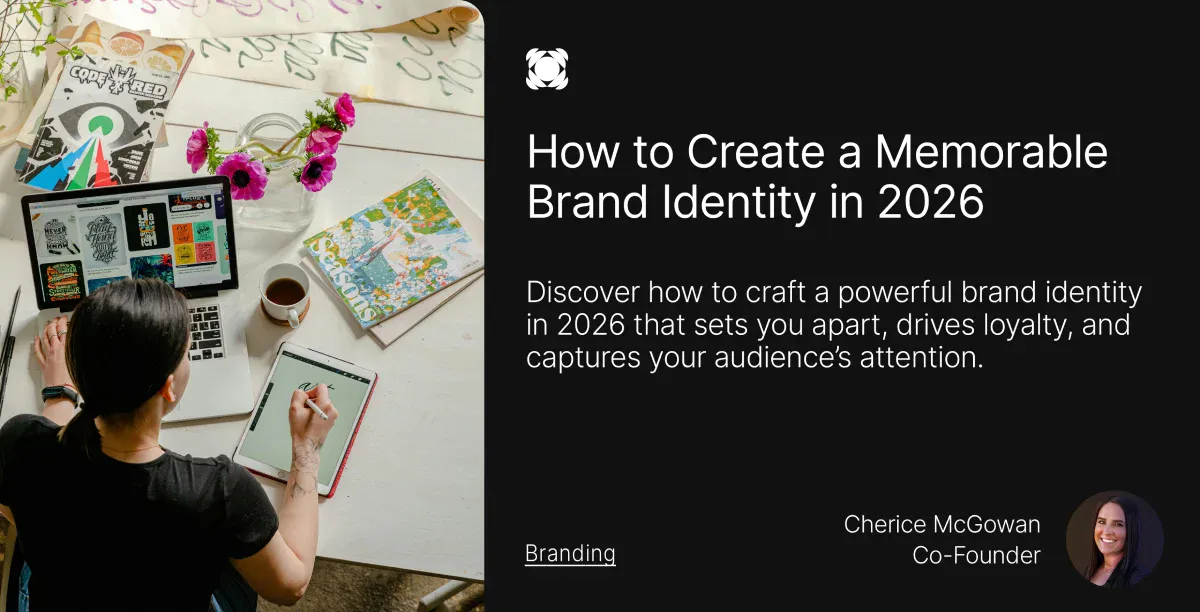Did you know that 81% of consumers need to trust a brand to even consider buying from them? This means that your brand identity must be exceptional and easy to follow if you want your brand to thrive.
No matter if you’re a completely new or an established company, having a well-thought-out brand identity is mandatory. Without it, there is nothing that separates your company from others out there.
A brand identity not only helps you stand out from your competitors, but it also helps visitors and potential customers remember your brand as a whole.
While creating a brand identity might seem like a big and daunting project, the reality is that, with proper steps, it can be simple and fun.
Below we’ll go through everything related to brand identity that you need to know to create your own in a matter of days.
Want to change your brand identity but don’t know where to start? Let us help you.
What is a Brand Identity?
We can’t explain how to build a brand identity without explaining exactly what it is.
Your brand identity combines everything your brand is. From how you communicate, to the visuals and content people experience. In simple terms, it defines your brand’s personality and dictates how your brand should talk and interact across all touchpoints.
Your brand identity isn’t only tied to your website like a lot brands think. The voice and messaging you use on your website should carry seamlessly to you social media posts, email campaigns, and every other channel where you interact with potential customers.
If you want your branding to be successful, you need an exceptional brand identity.
Examples of Exceptional Brand Identities
Before we dive into how to make a brand identity from scratch, let’s quickly go over 5 influential companies with great brand identities.
1. Apple
Most people around the world instantly recognize Apple’s logo. Even an apple with a bite mark makes people remember about Apple as a brand.
Even as their product changes, their logo and brand identity have remained consistent through the years. Look at an ad from the early 2000s compared to one from last year and the similarities in how the video is approached and how they present themselves are very similar.
Their unique branding ideas are one of the main reasons why they are as successful as they are.
Apple is an expert at showing that your brand can innovate year after year, but it doesn’t mean that your identity has to change with it, too.
2. Slack

Slack is a social media company that makes a platform for companies all over the world that want to facilitate communication between their workers.
They aim to maintain a casual and relaxed brand identity that still feels professional and well put together. They communicate and show that teams can use the platform for important work as well as regular casual discussion.
Being Microsoft Teams‘ biggest competitor, Slack needs a brand identity that helps visitors understand why they should pick it over any other alternative.
The results speak for themselves as they are constantly neck-and-neck with Microsoft Teams every year.
3. Coca-Cola
It’s hard to talk about brand identity without mentioning Coca-Cola. They are by far one of the most recognizable brands out there. As soon as you see a red can, the first thing that comes to mind is Coca-Cola.
Their brand identity proves that simplicity can be powerful when done correctly. A minimal red and white cursive logo anchors their visuals, while their consistent, positive, and upbeat social media voice shows how much they care about spreading happiness and positivity.
While you could say that their heritage and years of being around help them retain and gain new customers, they still have a fantastic brand identity.
4. Hydro Flask

You should know about Hydro Flask by now unless you haven’t been on social media for the past couple of years. They are a Gen Z-focused water bottle brand that nails its brand identity.
Their logo has changed throughout the years, but their current design is the perfect balance of minimalism and pop. They also have a very inspiring minimalist website that has a ton of interesting ideas that everyone should take note of.
But what really separates them from other water bottle brands? By far their biggest advantage is their customization options. Instead of hiding it behind product specs, they make it very clear from the start that their product is made to customize. This makes it enticing to people who want a unique product that speaks to them and that no one else has.
This makes it that much more enticing for customers who want to customize and make their everyday items stand out.
This is not only a plus for the customer either. This is a plus for Hydro Flask as well since people will inevitably ask where someone got that flask.
Overall, Hydro Flask is a great example of what to do with your brand identity and how to stand out from the competition without being too over-the-top.
5. Patagonia
Patagonia is a well-known clothing brand that has been around for decades. They are famous for their unique brand identity. It inspires others and focuses on the planet’s wellbeing and sustainability.
While many brands mention sustainability and show a bit of their process, very few embed it into their brand identity quite like Patagonia. Even their logo communicates their long-standing commitment to the environment.
They never compromise on quality either. Every single product they make maintains the high-performance and durability they are known for all while being made entirely from recycled materials.
People who care for the environment will always gravitate towards brands that are transparent and doing all they can to lessen their negative impact on the planet.
Patagonia has without a doubt one of the best brand strategies of this year and continues to show us that they can make it better.
How to Make Your Own Brand Identity
Building a brand from the ground up can look like a long and complicated project, but it doesn’t need to take you a whole year to finish it. While it does take dedication and time to do it well, the process becomes a lot more manageable when you follow the right steps.
A strong and meaningful brand identity starts with clarity. You need to know what your brand stands for, what it delivers, and how it’s supposed to capture interest. If you don’t have a clear answer to these questions then you’re not ready to create a brand identity just yet.
1. Analyze Your Audience and Competitors
Your brand identity starts by knowing who you’re talking to. Do you know who you are trying to reach and what motivates them to take action? Have you created multiple customer personas that outline their behaviors depending on the product or service you plan to talk about?
Knowing who you’re marketing to and creating content for is important. Creating content and building a brand identity without knowing anything about your ideal customer is a waste of time.
That’s why we’re going to quickly guide you on what to do to find your ideal customer and how to set up customer personas.
Check Your Competitors
A key starting point in understanding your ideal customer is reviewing and checking your competitors’ brand identities. For brands who offer a similar product that yours, take notes of how they communicate with their audience. Do they use a professional and buttoned-up tone or do they go for a more casual and conversational approach?
Check their visual content. Is it informative and information-packed, or snappy and to the point?
All of this information can help give you a bigger picture of whom you should be marketing to and in what way.
Quick note: Competitor data can guide you but it shouldn’t be your blueprint. Don’t mirror another brand’s identity. Your competitive edge comes from being unique and talking to your potential customers in your own way. Remember, you want to stand out, not blend in.
Create your Customer Persona
Once you have a good idea of who you’re marketing to, it’s time for you to create some customer personas. You must take your time with this crucial section for brand identity.
The first thing you want to do is establish broad information, such as:
Name: Make sure you use an actual name. Don’t call her Jane Doe.
- Education: Do they have a bachelor’s? Did they drop out? Is it even relevant in your industry?
- Interests: What are the hobbies that they would have? Does your product serve any purpose in any of their activities?
- Job: Where do they work and what is their position? Is this a factor that explains their interest in your product or service?
- Language: Do they speak more than one language? Which ones?
- Location: Where do they live? Is the location important when it comes to your product or service?
- Buying motivations: Why would they buy your product or service? What does it solve in their life that they need it?
- Income: How much money do they earn each year?
- Relationship status: Do they have a partner, or are they single?
- Aspirations: Do they have anything they set as a goal for themselves?
You might be wondering if this much detail is necessary, and the answer is yes every single time. The more information and detail you have, the stronger your customer personas are.
When you’re using your customer persona as the target person (when creating content), you want to feel as if your customer persona is a real person.
Some marketers even go the extra mile and include a headshot, real or generated, to make their customer persona feel a lot more real. To save you time, you can take all of the information you’ve gathered and use AI to create
Explore how we increased AW-Lake’s website session duration by 262% with new branding.
Example of a Completed Customer Persona
Name: Christopher Fisher
- Education: Went to college for economics and dropped out halfway through the career.
- Interests: Loves to play tennis on the weekends, spends time every day reading mindfulness books, and religiously goes to the gym.
- Job: Journalist
- Language: He speaks Portuguese natively but also knows English very well.
- Location: Fort Lauderdale, Florida
- Buying Motivation: Wants a custom website for his newly created brand so he can receive orders online.
- Income: $75,000 per year
- Relationship Status: Married and has two children.
- Aspirations: Wants to get his business all over the United States, with branches in every major city.
This is just one customer persona. Ideally, you want to create a customer persona for each specific product you develop. Not all companies create products and services for the same customer. So why would you use only one customer persona?
2. Create Your Value Proposition and Understand Your Mission
Now that you have analyzed your competitors and created a customer persona, we can now move on to your value proposition and your mission.
No brand identity is ready without knowing why you are selling your product or service and what makes your business stand out from the competition.
Value Proposition
What do you offer that is different from all the other companies with similar products to yours? Is there anything that a potential customer should know about first?
This is where analyzing your competitors comes in handy. By knowing exactly what they sell, you can leverage features your product has that theirs doesn’t.
Check all the notes you took on your competitors and start from there.
Mission
Knowing your value proposition is great, but what about what your business wants to achieve as a whole? No, “selling more” is not a mission statement. We’re talking about what mission drives your brand and makes you want to innovate and push new products and services out.
Knowing and understanding your value proposition is fantastic, but you also need clarity on what your business wants to achieve as a whole. And no, “selling more” isn’t detailed enough to be a mission statement. Your mission should reflect the main purpose that drives your brand forward and inspires you to keep innovating and improving your products or serves.
Learn what your brand purpose is. We can’t tell you exactly what it is because each brand has its own mission statement. It’s nearly impossible to create a proper brand identity if you don’t have a well-thought-out mission statement.
Similar to your value proposition, your mission statement will help you stand out even more from your competitors and other brands in your industry.
3. Customize Your Design and Make Guidelines
Now that you have the core of your brand identity settled, it’s time to create the visual and written guidelines for your business.
There are several important aspects to consider design-wise when talking about brand identity. So let’s get started.
Colors
Picking your brand’s color palette is a very important decision. The colors you end up picking should align with what your brand represents and stands for since they will heavily influence how an audience will interpret and remember your business.
In fact, we wrote an article about the psychology of colors and what each color represents, emotion-wise.
Knowing what colors you are going to use is especially important for the next section.
Logo
Everyone is focused on this part of the brand identity the most, and for good reason. Having a good and memorable logo is a must if you want to thrive.
Avoid overcomplicating your logo and making it hard to understand. A simple, memorable logo helps people recognize your brand instantly, no matter where it is.
While we highly recommend you find a professional graphic designer for logo creation, you could do it yourself if you feel confident enough in your design skills.
Font
Picking a font is simple and shouldn’t take too long as long as you’re not looking for a custom font for your brand.
A good rule of thumb when picking fonts is to choose one that looks good in all caps in case you need to use it for certain areas on your website.
Another essential rule when it comes to fonts is to pick one that is easy to read on both desktop and mobile. While it’s great to pick a unique font that aligns with your brand’s personality, you should still avoid complex fonts that make people take longer to read something. The last thing you want is for potential customers to give up when trying to read something you posted due to the font used.
Adding personal touches to your font is fine as long as your potential customers can read what it says without having to squint their eyes.
Having a solid font that anyone can easily read is one of the most essential web features you’ll ever have.
Make Sure It’s Consistent
When talking about brand identity, you want to make sure that it looks and feels the same no matter where the visitor looks. This isn’t just for your website. When we mention consistency, we mean everywhere.
Consistency is at the core of any exceptional brand identity. When we talk about consistency, we mean that your brand should look and sound the same no matter where a potential customer sees it in. Consistency isn’t just for your website. Your email campaigns, social media posts, and ads should all follow suit.
How you interact on social media with other accounts, how your email signature looks, what all of your brand’s social media profiles look like. Every area that has your brand on it should be consistent with your brand identity.
Create Guidelines or a Style Guide

Creating a document that lets everyone in your company know what to do and what not to do when it comes to creating content for the brand is very important.
While you might know the ins and outs of your brand identity after making it from scratch, most workers in your company won’t. This means that having a document that explains everything in an easy-to-follow format is great.
Not only will you save yourself the hassle of checking everything your brand posts, but you will also make your brand identity consistent no matter what.
If you have the time, you could create both a style guide for your brand’s graphic designers and a guideline book for everything else.
Make sure to go into detail for both. How do you want to speak to customers on social media? Should it be casual or professional? How should it be for emails?
Get into the nitty-gritty and leave no questions unanswered.
Learn how we increased Arc of Northern Virginia’s returning website users by 32% with a complete brand rework.
4. Biggest Brand Identity Mistakes
Now that you have your brand identity set, let’s quickly go through some mistakes we see all the time when reviewing brand identities from clients.
Blatantly Copied a Competitor
We mentioned this before, but we’ll mention it again. You should never copy a competitor’s brand identity 1 for 1. While it’s fine to take inspiration from their ideas and values, going out of your way to copy and paste their hard work isn’t.
You want to use the information you learn from your competitors to your advantage, but never copy what they do. How are you planning to stand out if you just copy their whole strategy and identity?
Check for Consistent Messaging
A key part of brand identity is communicating in a way that’s easy for potential customers to understand. Try to avoid publishing complex ideas without having other people review it first. What might make total sense to you might not be obvious for someone who is not familiar with your brand.
5. Let Other People Review It
After hours and hours of hard work, you finally finished your company’s brand identity. That means you can instantly publish it and use it, right?
Not quite. While it might seem perfect to you after hours of work, it might not be the case from an outsider’s point of view.
Ask for feedback from coworkers and friends, and ask them if the brand identity you created makes sense for your brand.
Make sure to take note of what they say and consider making changes if you hear the same feedback over and over from different people.
Get a Custom Brand Identity That Stands Out and Converts With Blacksmith
After going through this article, you might have noticed how much work goes into creating a proper brand identity that isn’t only unique but also converts visitors into clients.
It’s not an easy process, especially if you have no background in graphic design. So what now?
That’s where we come in. Here at Blacksmith, we’re experts in creating branding strategies that increase engagement and provide you with the conversion rates that your brand deserves.
As a full service branding agency, we have a group of seasoned graphic designers ready to apply all the latest ideas and strategies to your brand identity. This way, you can stand out from the competition while also providing the most value to your clients possible.
Still unsure if investing in a new brand identity is a good idea for your brand? Don’t worry; click here to schedule a call so we can audit your website. This way, we can show you what areas could be improved with a new and reworked brand identity.









